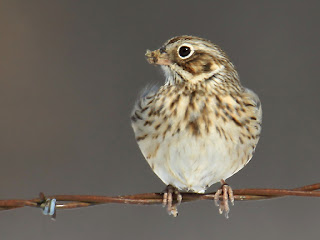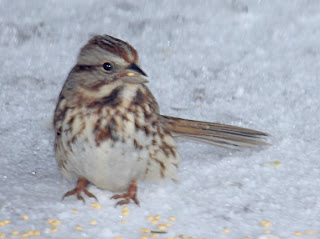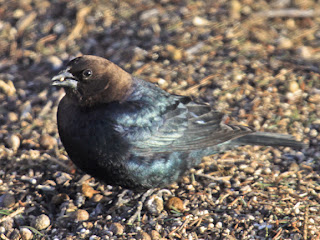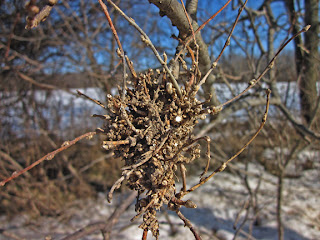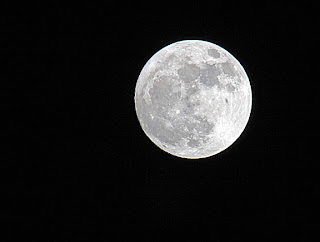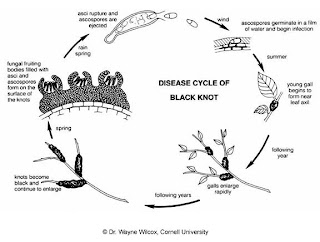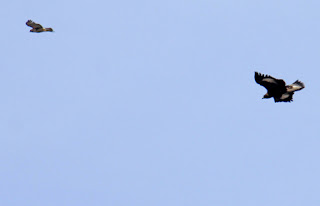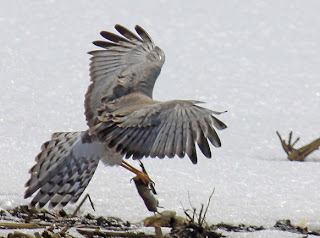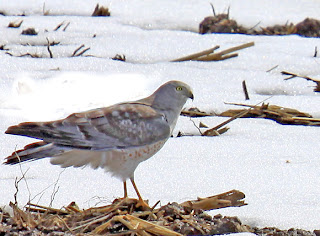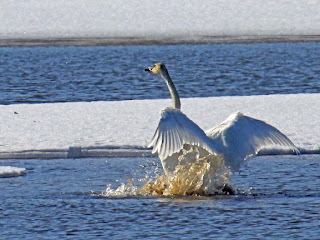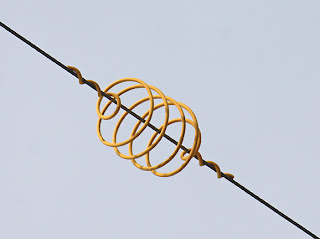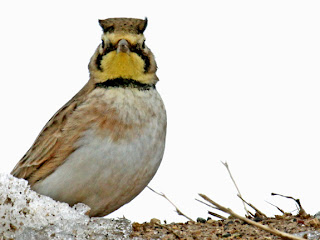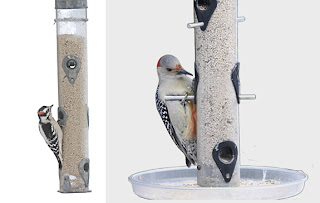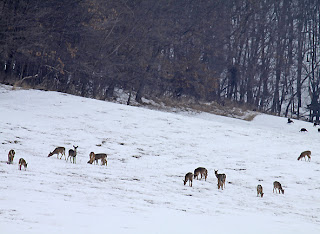When I got up this morning, the first Saturday in March, the sky was gray. The thermometer was a blue 25º F. And there wasn't much activity at the bird feeders.
Not a great day for a hike in the woods.
But because snow is in the forecast for Sunday night (and into next week) and the birding listservs were a-buzz with reports of Sandhill Cranes and other migrants, I decided we might see something along the Lower Chippewa River. Why not take the Prius out for a spin through the bottoms to Meridean?
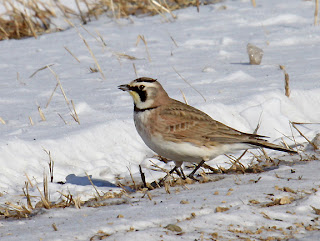 |
| Horned Lark |
The roadsides were full of Horned Larks - some in isolated pairs, others in flocks of a dozen or so. I rolled down the window and put my stealth Prius in "electric" mode. The birds were not fooled. They saw me coming.
Maybe birdsong would work. I pulled out my trusty iPod and played the BirdJam song of the Horned Lark. They didn't buy it.
I could not get close enough for my 400mm lens. After about a dozen or so tries, I gave up with the camera and just enjoyed watching them with my binoculars.
Where are the Snow Buntings? I looked at yet another flock of roadside Larks and there they were - the first Snow Buntings I've seen in months.
Other than the regulars (juncos, tree sparrows, downy and hairy woodpeckers, Bald Eagles and White-breasted nuthatches), we didn't see many birds. As we coasted into Meridean, I looked towards the river and spotted a raptor perched in a big old cottonwood, facing the corn fields. It was a Rough-legged Hawk. They haven't left yet.
On the way back home, I took a detour to check out a tree where we'd seen a rough-leg before (on County V near SR 85). It was not there today.
I continued on down County V and stopped by a pen full of cows. Did that pile of manure move? I pulled out my binoculars for a closer look. It wasn't manure - and it DID move.
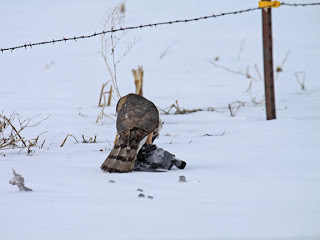 |
| Female Cooper's Hawk in a Cow Pen |
It was a Cooper's Hawk, and she was plucking the feathers off a pigeon! We sat and watched as the feathers flew.
The pigeon moved its head and the hawk stopped plucking and loosened her grip. Then the pigeon broke free and took off, flying back towards the barn. All eyes (cows and humans) were on the hawk as she took off after the pigeon and nailed it over by the feed trough.
She calmly started plucking away. Then suddenly - to everyone's surprise, the pigeon broke loose again. This time the pigeon got away - and flew into the barn.
Cooper's Hawk didn't hang around. She took off in the other direction.
The cows went back to feeding and we headed home.

